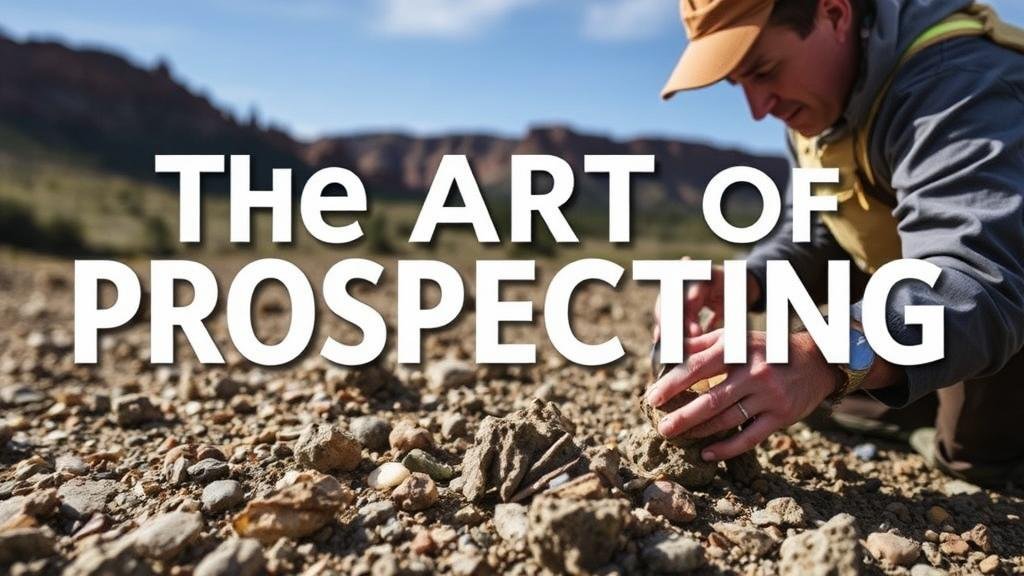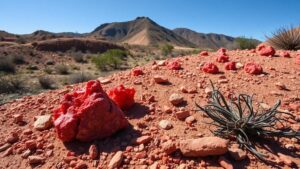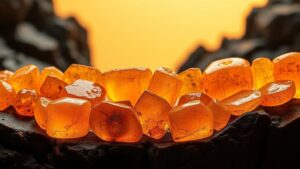The Art of Prospecting: Modern Techniques for Gem and Fossil Finds
The Art of Prospecting: Modern Techniques for Gem and Fossil Finds for Rockhounds and Mineral Collectors
Prospecting for gems and fossils is a rewarding hobby that requires a blend of knowledge, skills, and techniques. In recent years, modern tools and methodologies have transformed how rockhounds and mineral collectors approach their craft. This article will explore the art of prospecting, detailing modern techniques used to discover valuable gems and fossils efficiently and effectively.
Understanding the Geology
Before heading out on a prospecting adventure, it is essential to familiarize yourself with the geology of the area you are exploring. Understanding the rock formations, sediment types, and mineral deposits can increase your chances of success. For example, sedimentary rocks often contain fossils, while igneous rocks might be richer in valuable minerals like quartz or gemstones.
Geologists classify rocks into three primary types:
- Igneous: Formed from cooling magma; examples include granite and basalt.
- Sedimentary: Comprised of particles cemented together; examples include sandstone, limestone, and shale.
- Metamorphic: Formed under heat and pressure; examples include schist and marble.
Knowing these classifications allows collectors to determine which areas might yield promising finds based on geological maps and local mineralogical surveys.
Utilizing Modern Technology
Modern prospecting has been significantly enhanced with the advent of technology. Here are a few tools that every rockhound should consider:
- Metal Detectors: These devices can locate metallic minerals buried underground, making them invaluable for finding gold, silver, and various metal ores.
- Smartphone Apps: Apps like Rockhound or Geology Toolbox provide geological maps, GPS capabilities, and identification guides that assist in fieldwork.
- Ground-Penetrating Radar (GPR): This advanced technology utilizes radar pulses to image the subsurface, proving useful for locating potential fossil beds or mineral deposits without invasive digging.
According to a study by the Geological Society of America, regions scanned with GPR have a 75% higher recovery rate for fossils compared to traditional methods. This showcases the impact technology can have on successful prospecting endeavors.
Field Techniques
While technology plays a vital role, classic field techniques remain fundamental to successful prospecting. Here are some tried-and-true methods:
- Surface Searching: Walking the area and visually inspecting the ground can yield discoveries. Look for exposed rocks and gravel that might wash down from nearby formations.
- Stream Sediment Sampling: Streams often carry gemstones and fossil fragments from upstream locations. Panning or sifting through sediment can reveal valuable finds.
- Digging Test Pits: Setting test pits at strategic locations can help uncover deeper mineral deposits or fossil layers. Make sure to note the stratigraphy, as it can provide insights into the types of materials you may encounter.
Ethical and Responsible Collecting
In prospecting, it is critical to adhere to ethical practices to preserve sites for future collectors and protect the environment. Consider the following:
- Obtain Permits: Always ensure you have the necessary permissions to collect in specific areas, especially on private or protected lands.
- Leave No Trace: Practice responsible collecting by minimizing impact on the landscape. Fill any holes you dig and avoid disturbing wildlife.
- Document Finds: Record the location and context of your discoveries, which contributes to scientific knowledge and allows others to validate or replicate your findings.
Networking with the Community
Joining clubs or online forums can be greatly beneficial for new and seasoned collectors alike. Engaging with a community of enthusiasts provides opportunities for:
- Field Trips: Many clubs organize group outings that not only enhance safety but also increase the knowledge shared among members.
- Knowledge Sharing: Discussing techniques or discoveries with fellow rockhounds can open doors to new methods and locations for prospecting.
- Workshops and Seminars: These events often feature expert speakers and hands-on instruction, which can expand your skill set significantly.
Conclusion: Making Your Mark as a Rockhound
Prospecting for gems and fossils is an art that combines scientific understanding with practical fieldwork. By utilizing modern technology, practicing ethical collecting, and networking with fellow enthusiasts, rockhounds can significantly enhance their chances of success. Remember to stay informed about geological developments and continuously refine your techniques as the field evolves.
As you embark on this exciting journey, always be ready to embrace the unknown nature of your discoveries. With patience and practice, the art of prospecting can lead to remarkable finds that contribute not only to your collection but also to the broader field of geology.


